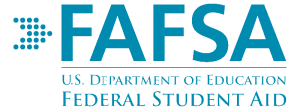
You have decided on your career and the college you want to attend. Now you have the task of finding a loan so you can afford to attend college and help your dreams come true. Paying for college is a scary thought, especially when the average public college tuition costs $24,061 and average private is $47,831.
There are similarities and differences when it comes to student loans and ordinary loans. Student loans are similar to other loans in the way that you borrow money from a lender and promise to repay the loan with interest. The difference from student loans and ordinary loans comes in the repayment terms of student loans. With an ordinary loan, you are expected to begin paying the loan off in installments as soon as you receive the money. In the case of a student loan, you are traditionally expected to begin repaying the loan after your education is over because of the lack of employment needed to pay the loan is not there until you complete your schooling. As you will read below, some types of student loans are vastly superior to others.
There are 2 main categories for student loans, federal and private loans. Let’s take a look at the different types of loans that come with federal and private loans:
- Stafford Loans are the most common type of federal loan that students apply for and use for funding their college education. Stafford loans are capped at a certain amount per year, based on whether you are dependent on or independent of your parents and what year you are in school. There are two types of Stafford Loans: Subsidized and Unsubsidized loans.
- Subsidized loans are awarded based on your financial need. The interest on these loans will not accrue while you are in school at least part-time. The interest will also not accrue if you apply for “deferment” following your education to help you have time to get an established job and full-time employment.
- Unsubsidized loans are not based on your financial needs, and the interest will begin to accrue from the moment the government gives you the loan. If you are an undergraduate, a subsidized Stafford Loan will have a lower interest rate than an unsubsidized one.
- Perkins Loans are for students with extreme financial need. The interest rates for Perkins Loans are a standard 5%, and the loan is limited to $5,500 per year in aid.
- PLUS Loans are issued to parents of students. Your parents can borrow a PLUS loan to supplement the costs that were not covered by other forms of financial aid that you have received.
- A consolidation loan combines one or several loans into a single loan package. According to the nonprofit American Student Assistance (ASA), interest rates on consolidation loans are calculated by doing a weighted average of the rates of each individual loan being combined and rounding up to the nearest one-eighth percent. The interest rate is capped at 8.25%.
- Institutional loans are offered by the school you’re attending. Unlike a scholarship, this money must be repaid to the school once you graduate.
- Private loans are sometimes called “alternative” or “deal” loans because they are different from government-funded Stafford, Perkins and PLUS loans. Unlike government loans (whose interest rates don’t vary and which have standard repayment schedules), the interest rates of private student loans can change over the life of the loan, and repayment schedules are not standardized. For this reason, private loans tend to be a greater financial burden for you when you take them on. These loans are recommend for you to use only when all other sources of financial aide have been exhausted.
After learning about the different types of loans available, the first step is to fill out a “Free Application for Federal Student Aid” (FAFSA) form. A few things you will need for this form are:
- Your Social Security Number
- Your W-2 and Tax Return Paperwork From The Previous Year
- Your Parent’s W-2 and Tax Return Paperwork From The Previous Year (if still legally a dependent of your parents)
Submitting the FAFSA form online is the most recommended route as it is the fastest way to apply.
The next important step is to find out the total cost of the school that you are want to attend. For this you will need to factor in:
- Tuition
- Additional Fees and Charges (These vary from school to school, so ask your admissions and records office what that may be.)
- Housing
- Books and Supplies
- Transportation
- Miscellaneous
After you find the total cost, find out how much your family is able to help with your education funding. Sometimes your parents will have set up a savings account to help with these cost.
Once finding out what loans you are eligible for, investigate the different types and what they have to offer. What is the interest rate? Total amount owed later? Accept the loans that are right for you and ensure to budget your money to last through the year and cover everything you will need.
The process of applying for loans is repeated every year, as your income can factor in State and Federal grants, depending on what your state has to offer. Your income also factors how much interest-free and interest loans you are eligible for. Don’t just assume that your loans will be the same as they were the previous year. As income and other factors change, so do your loans. If you are stuck in a difficult spot when it comes to paying for school and do not have enough loans to cover, search out grants and scholarships offered for students in your position. There are many companies offering new grants and scholarships every year.
